How to lay turf
Turf is pre-grown grass seed that's been cut from the ground with a slice of top soil. Almost like an outdoor, grassy carpet, it can be laid to fix patchy areas in an existing lawn or to create a new lawn completely from scratch. Turf is laid in rolls making it a relatively straightforward garden project - simply unroll it (it's rolled up for easy handling), lay it and wait for it to take root.
You can lay turf at almost any time of the year, as long as the soil isn't waterlogged or frozen. We recommend spring and early autumn as the best times. Check the weather forecast before buying your turf to avoid any prolonged wet weather, as well as frosts.




How much turf do I need?
To work out how much turf you need, measure your lawn then multiply the length by the width to give you the area in square metres. Add an extra 10% to allow for cutting and wastage.
We recommend preparing the site before buying your turf and laying it within 24 hours of its arrival.
If you buy and are unable to lay within 24 hours due to bad weather, unroll the turf and lay it flat and out of full sun, making sure it doesn’t dry out. Don't leave it rolled up or it will turn yellow within a few days.
- Top soil
- Sharp sand - if necessary
- Pre-turf fertiliser
- 50 x 50mm timber - to create the wooden pegs
- Scaffold boards x3, or similar, to stand on when laying the turf
- Lawn feed
- Garden spade
- Tiller or cultivator
- Garden rake
- Lawn spreader or roller
- Builders line
- Club hammer
- Lawn edger
- Bucket
- Soft broom
- Lawnmower
- Gardening gloves
- Sturdy footwear
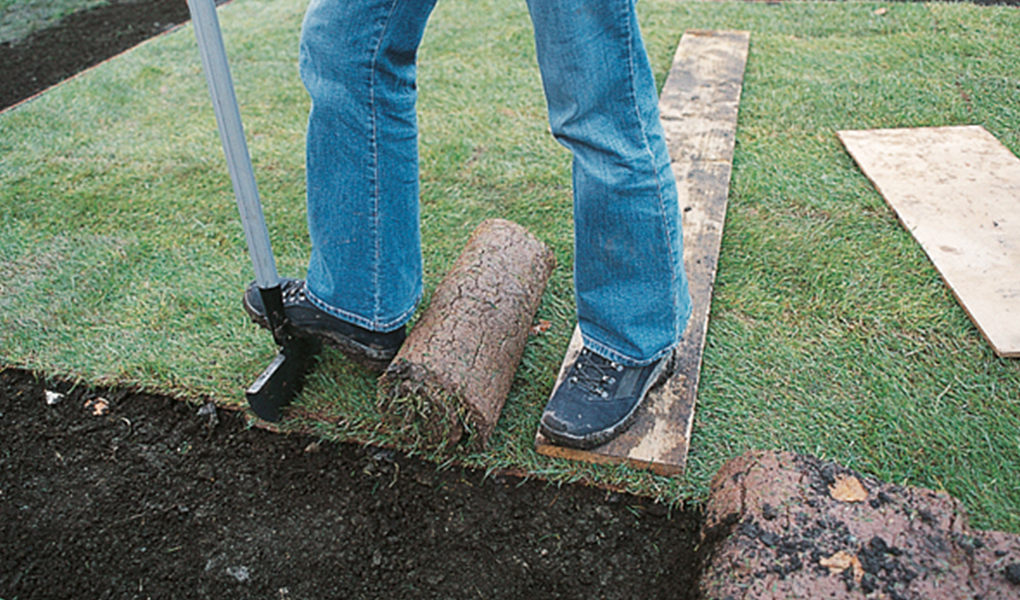

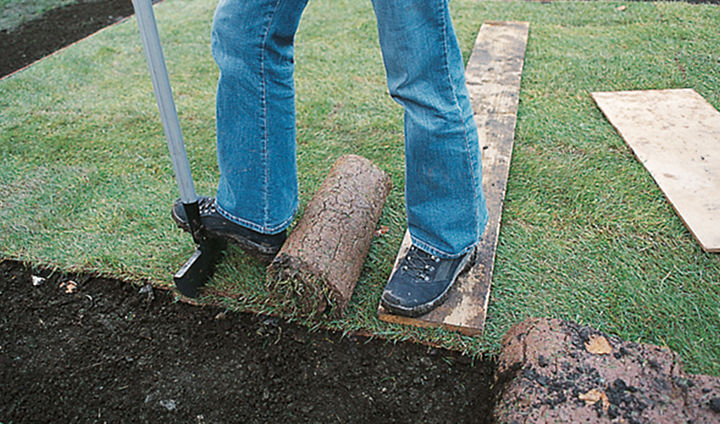
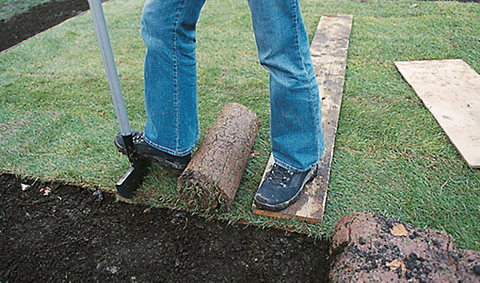
1. Remove existing turf
Use two or three timber boards as a platform to work from (old scaffold boards or gravel boards are ideal).
Remove any existing grass by under-cutting it with a garden spade or edger. If you have a large area, consider hiring a turf cutter for a quicker and easier option. Old, removed turf can be stacked and turned into compost.
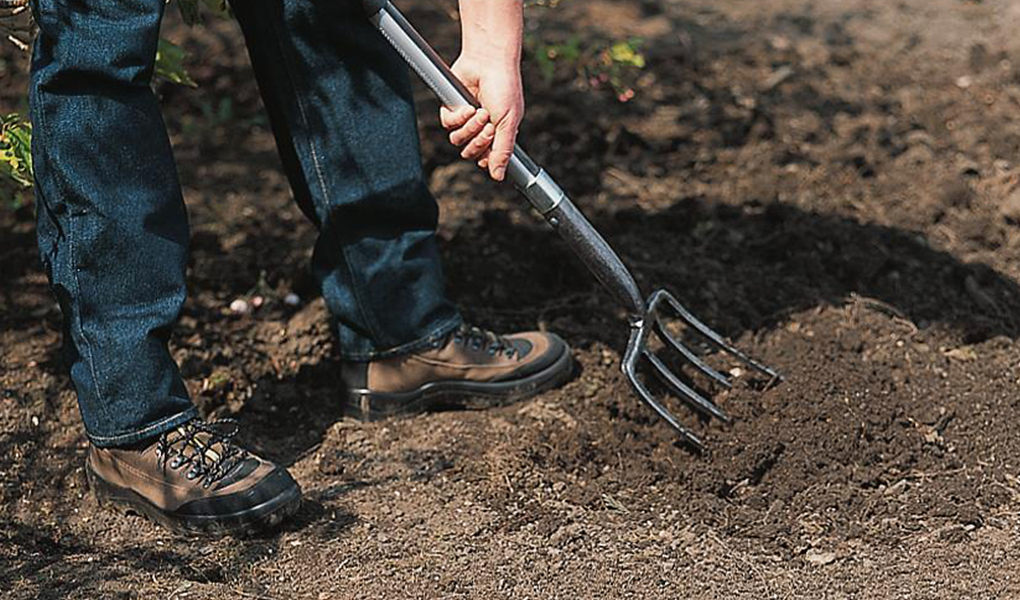
2. Remove debris
Dig over the area to a depth of about 15cm and remove all debris, large stones, weeds and old tree roots. It’s best to hand weed if you can, but if weeds are a problem, use a non-residual weed killer. Residual weed killers can remain in the soil and prevent the lawn from establishing. Use a tiller or cultivator to help with tougher, uncultivated areas or large sites.
If the soil where you're planning to lay your turf is poor in quality, or heavy in texture (such as a clay soil), dig in a 50/50 mix of top soil and sharp sand at this point to improve the drainage qualities.
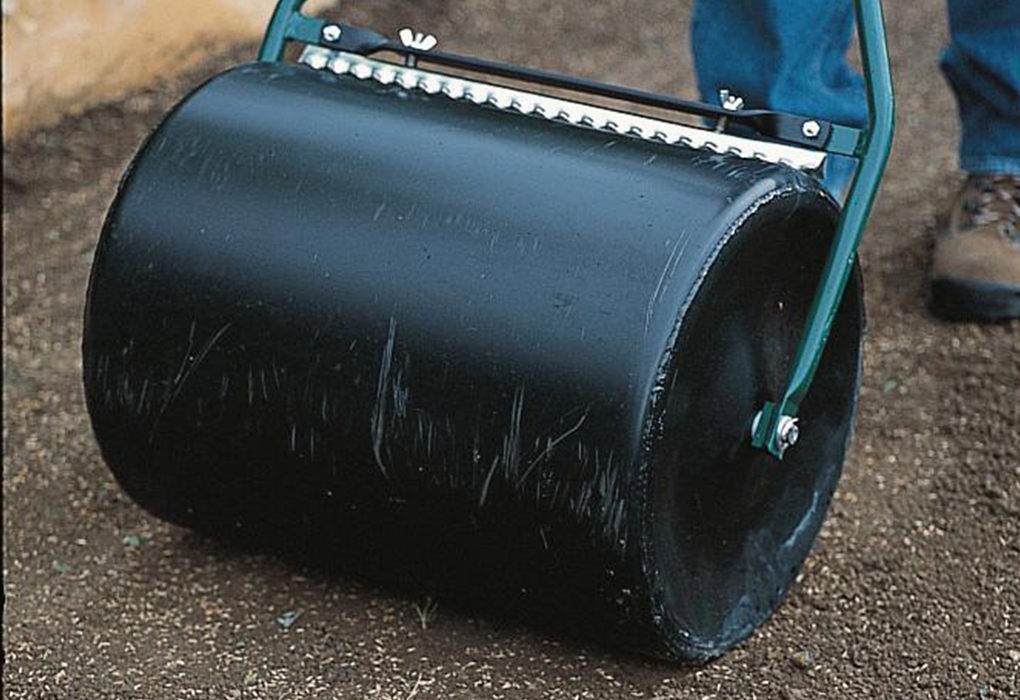

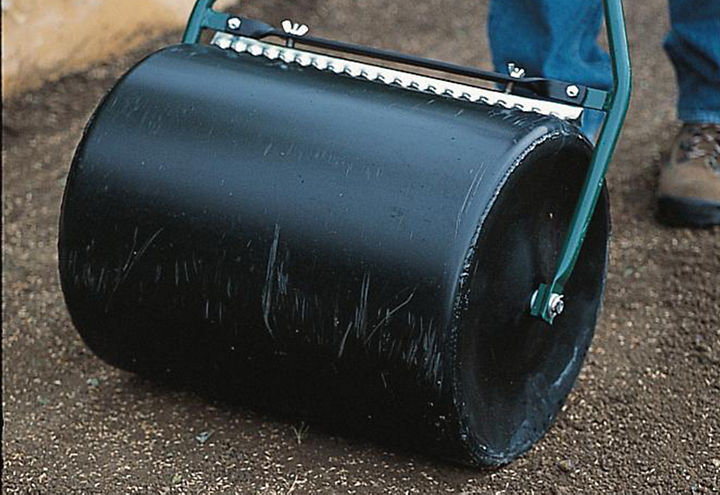
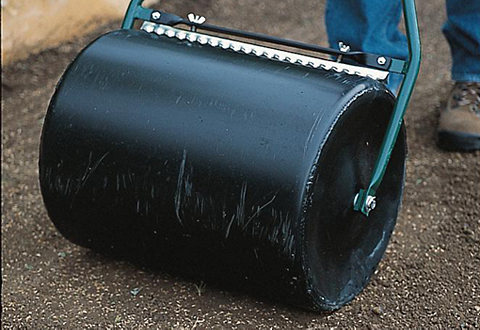
3. Prepare the soil
Use a garden rake to rake over the ground to produce an even surface. Firm down the soil by lightly rolling it with a garden roller or by treading the area down with the heels of your feet to help get rid of any air pockets in the soil.
Rake it over again, repeating the process until the whole area is level, even and firm, but not compacted. Sprinkle granules of pre-turf fertiliser or bone meal over the area following the instructions on the pack, and lightly rake it in. This helps the rooting process, so your turf becomes established more quickly.
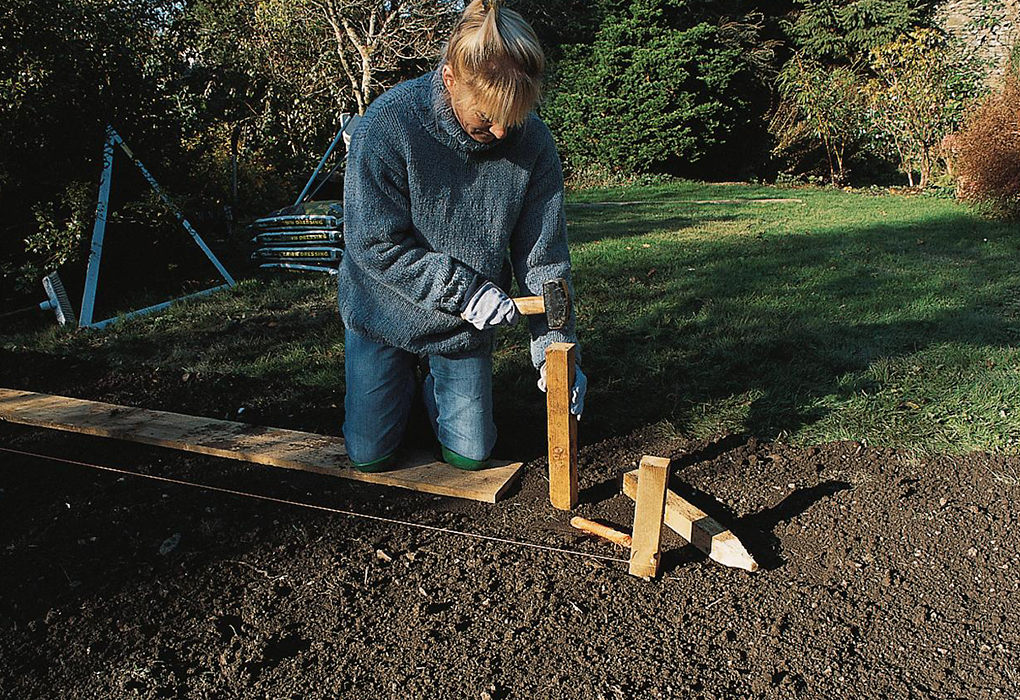

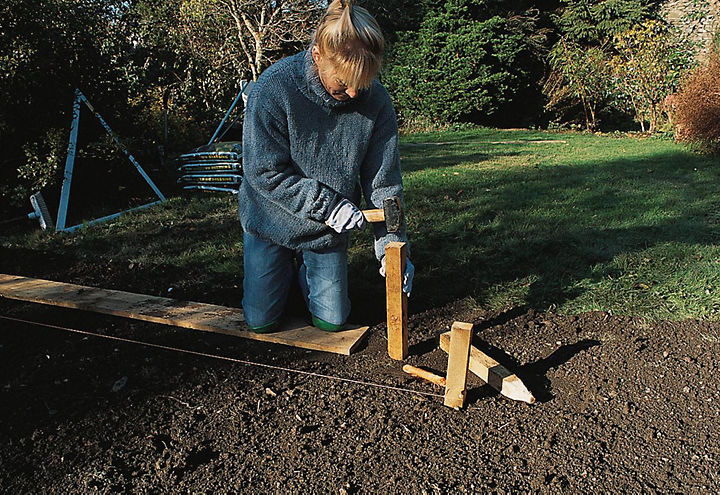
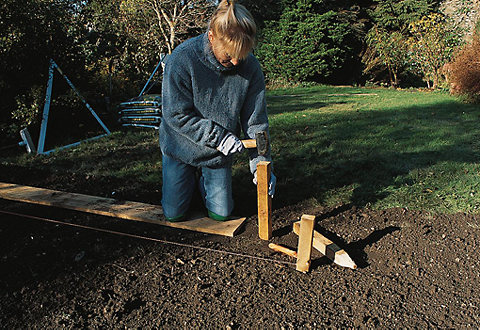
4. Mark out the lawn
Mark out the exact boundaries of the lawn using a builder’s line and sharpened wooden stakes or pegs. Drive them into the ground with a club hammer.
Rake your soil one last time – remove any last stones and make sure that it’s level. Once the soil is level, keep off the area for a few weeks to let the rain get on it and allow for the ground to settle before laying your new turf.
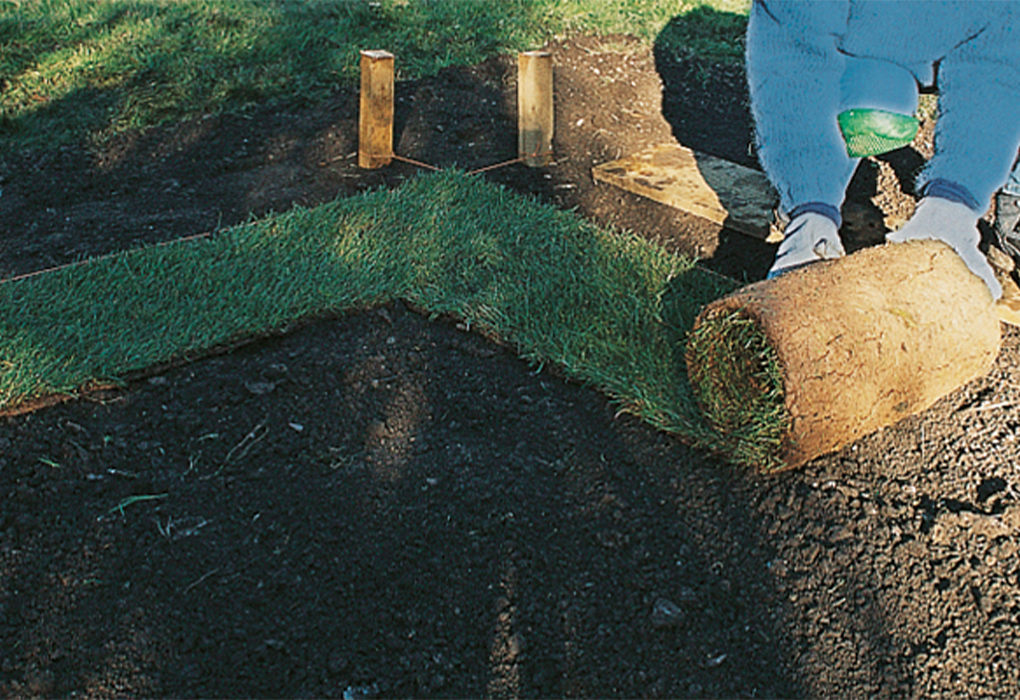
1. Roll out the turf
Lay your turf along all the edges first, with the longest sides of the turf parallel to the boundary line. Before laying it up to the hard edges of paving or stepping stones, check that the top of the soil is level with the edging and even out as necessary. Having the surface of your lawn slightly higher than the surrounding hard edge will mean you can mow right up to the edge. Trim any excess with a long-bladed garden knife, work carefully and slowly, keeping your hands away from the blade as you cut.
Lay a timber board to use as a platform to work from and start laying turf strips from left to right. Stagger the joints in the same way as brickwork, from row to row, to avoid unsightly joins. Butt the ends and edges tightly together without stretching the turf, so there are no visible gaps.
Sprinkle fine top soil into any gaps between rolls of turf and brush over with a soft broom for even coverage otherwise the edges will dry out.
Cut turf strips to size using an edger. Then tamp down the edges of adjacent strips with the flat edge of a garden rake so that the turf is settling tightly down onto the soil below. Keep sprinkling top soil into any gaps between the turfs and brush over with a soft broom. Any exposed edges of new turf can be butted up with more top soil along the cut edge to stop it drying out and help the turf to root down and establish.
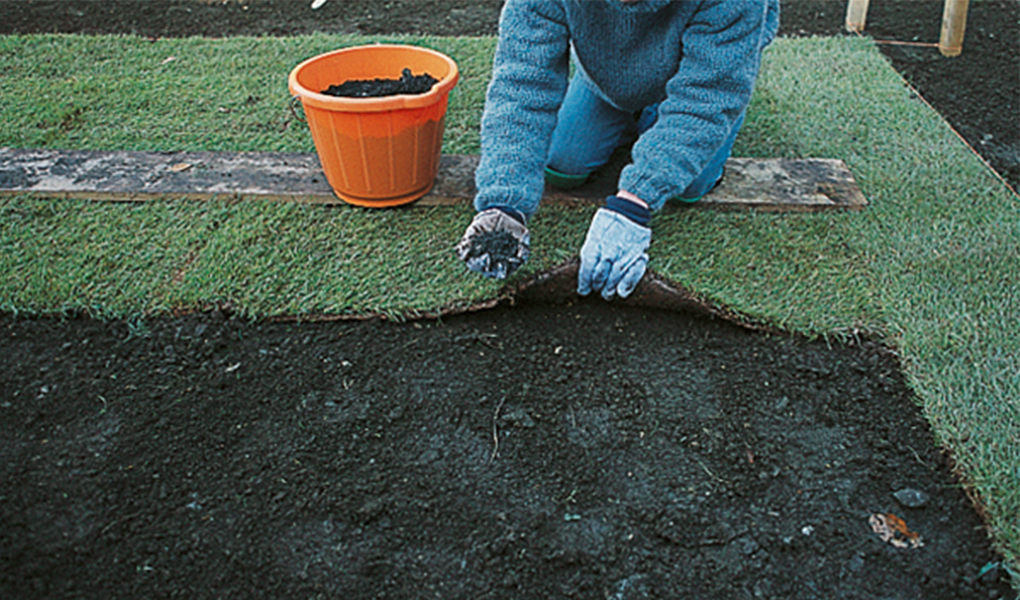

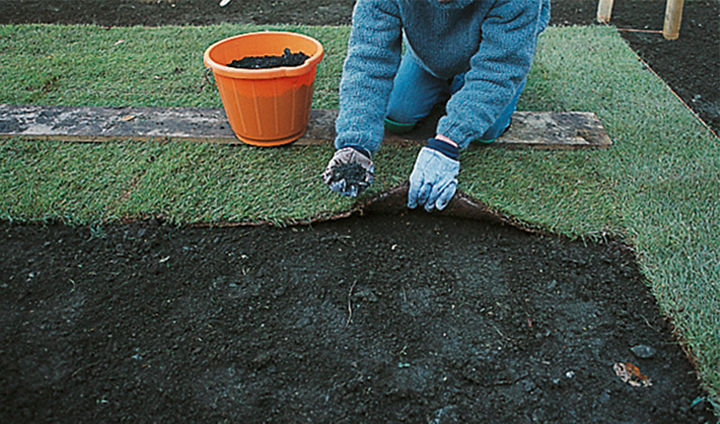
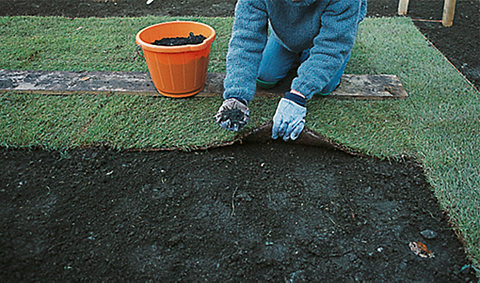
2. Fill any hollows
Fill any hollows in any of the turf by peeling back the strip and filling beneath it with top soil before replacing it.
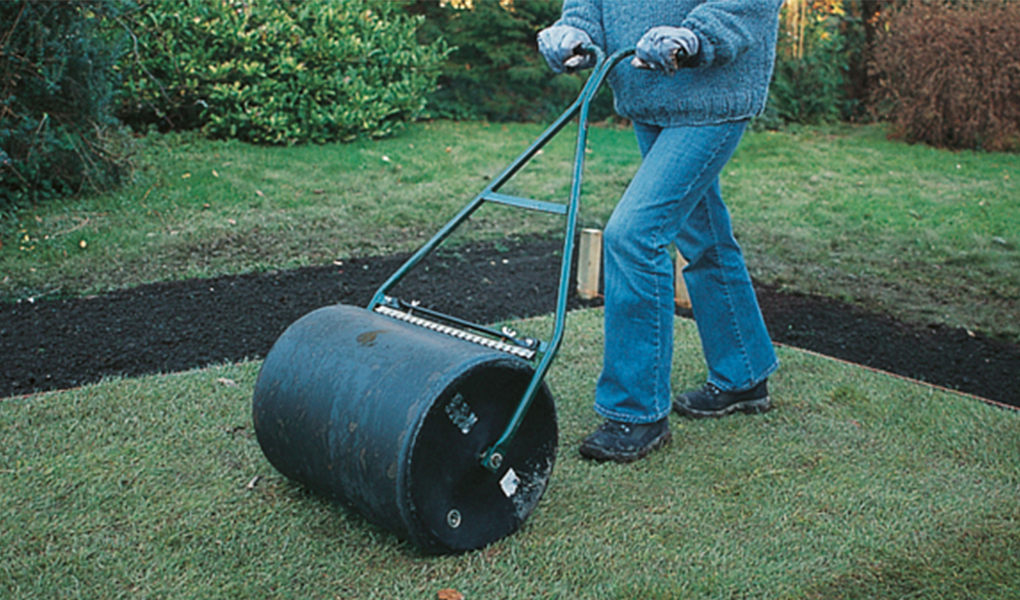

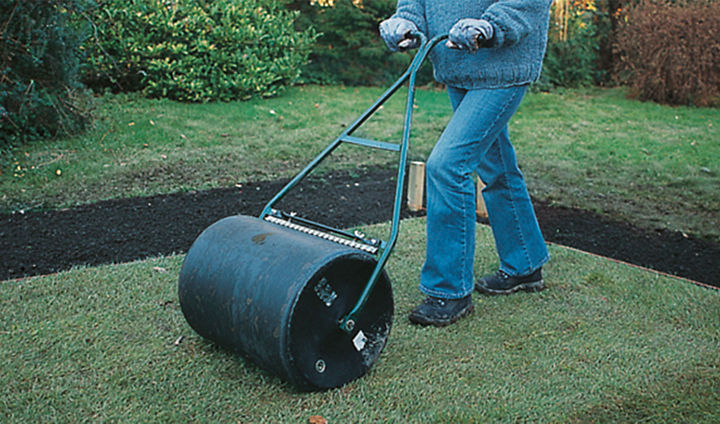
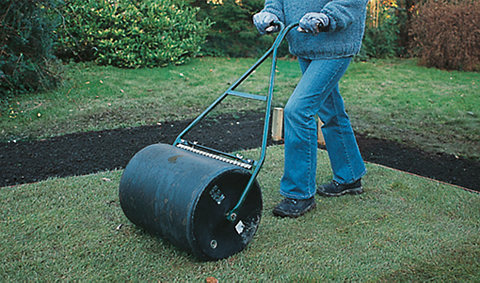
3. Roll with a garden roller
Finish by rolling your finished lawn with a garden roller to level the turf and bed it into the soil.
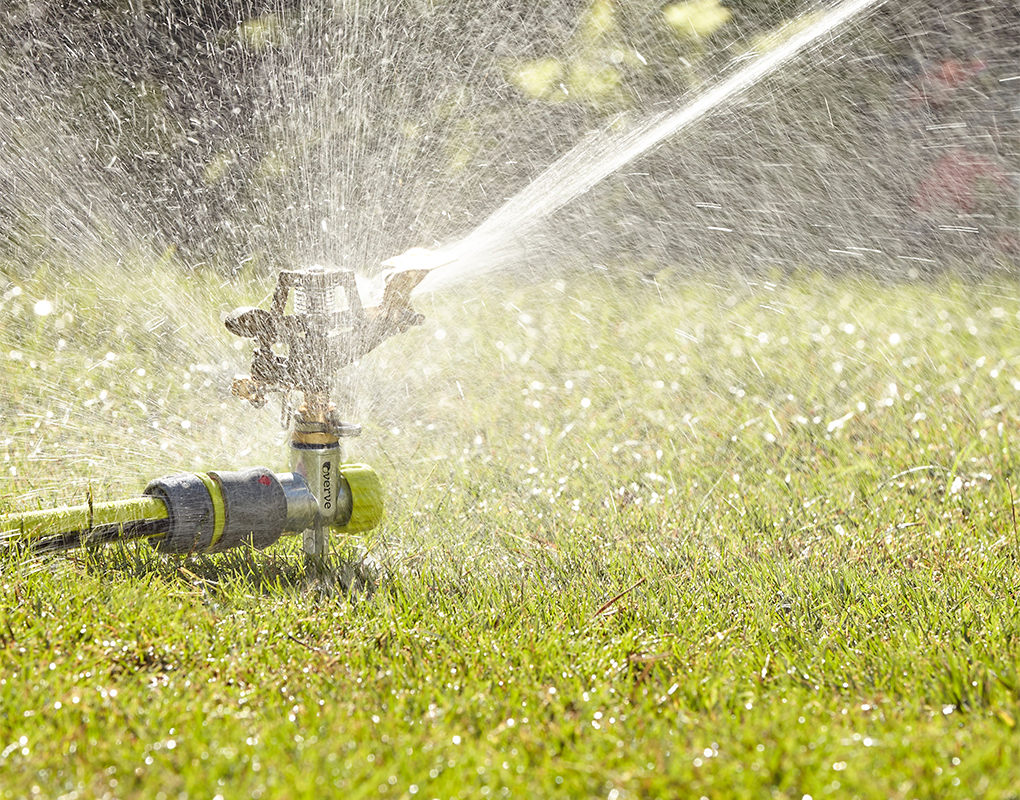

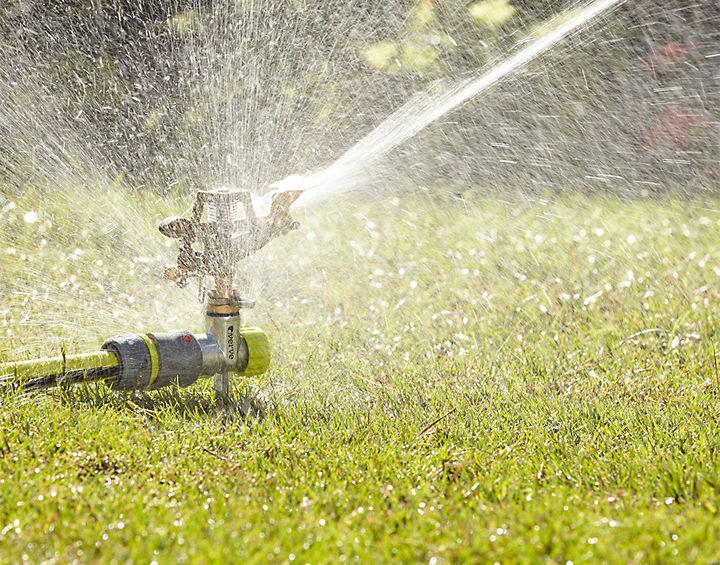
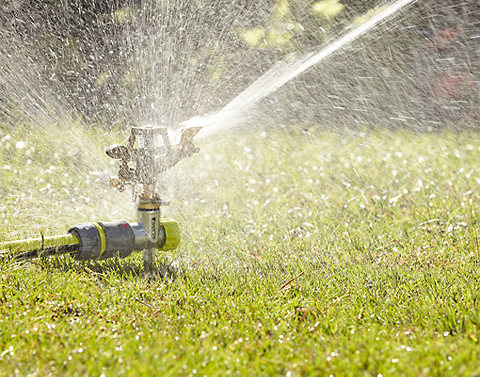
4. Water
Water the newly-laid lawn well - a sprinkler is ideal as it offers even coverage. Continue to do so regularly until its established.
In spring and summer, this could mean watering it once or twice a day. And look out for warm or windy weather. The lawn will dry out most quickly in these conditions making the turf shrink and create unwanted gaps.
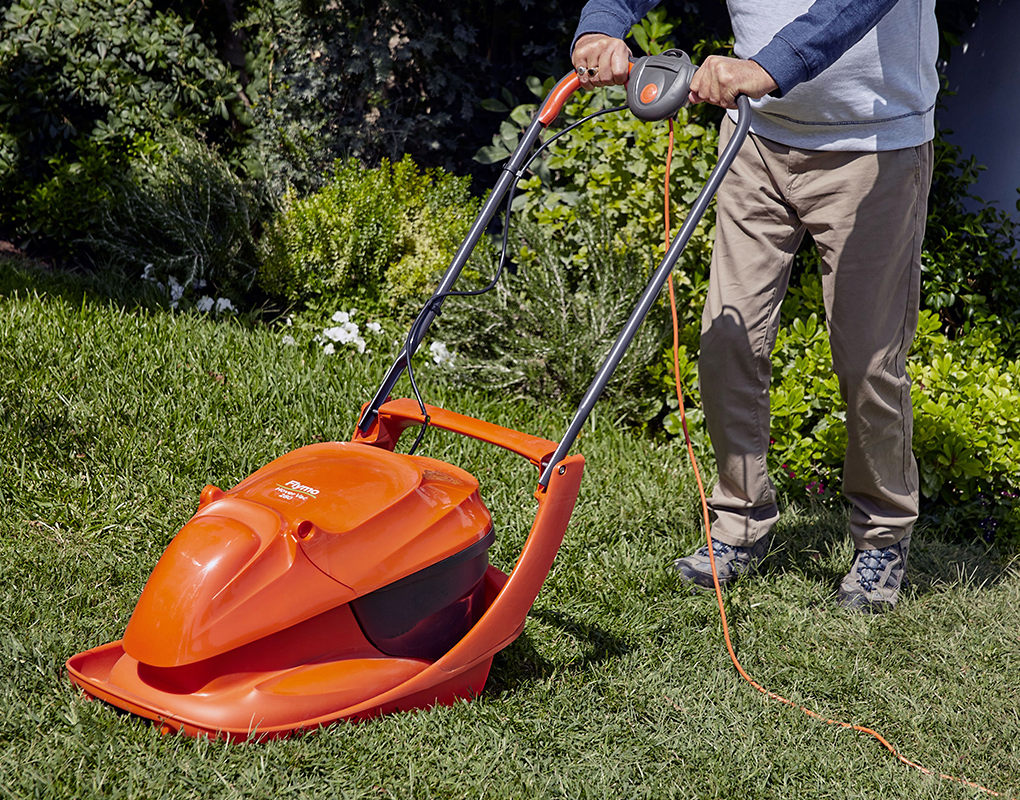

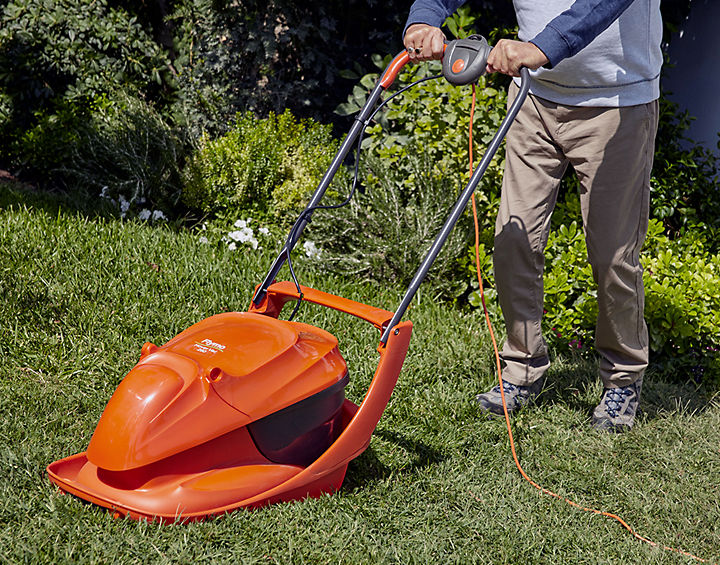
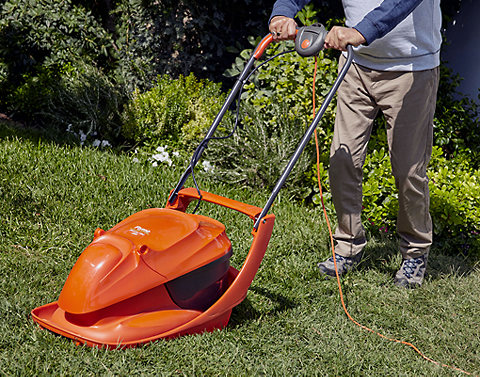
5. Caring for your new lawn
Avoid walking on your new lawn for a couple of weeks so the turf can bed in and knit together.
Only mow it once the turf has rooted, find out if it's rooted by gently trying to lift an edge: if it won't come up, it's taken root. Set the lawnmower blades at the highest setting and take off no more than a third of the grass height each time.
If you've laid your new lawn in spring, begin feeding it with a lawn feed after two months. If you laid it in autumn, it won't need feeding until the following spring.
Follow the same principles as for laying a square or rectangular lawn. Outline the boundaries with pegs and line, then lay turfs along all the edges – both the straight sides and the one with the curve. You will need to overlap pairs of turfs slightly to form the curve, and then trim the excess.
Next, starting at one of the corners of the lawn, lay rows of turf, working forwards from one of the straight sides and staggering the joints from row to row. As usual, work from a board placed on top of turfs you have just laid.
As with any edge, curved or straight, you may need to adjust the lengths of the turfs as you approach it to avoid finishing with a tiny section. Turfing is not an exact science: expect to lift, recut, adjust and replace the turfs as you proceed.